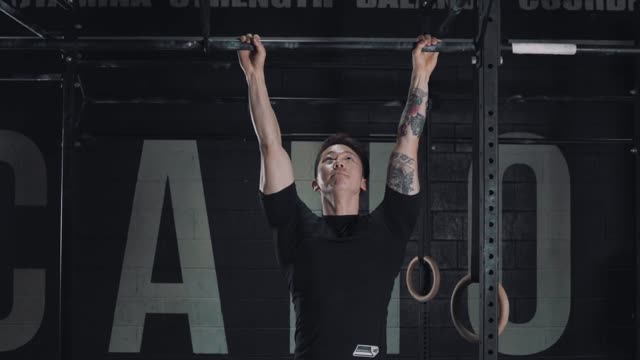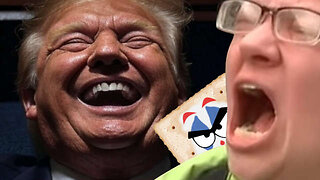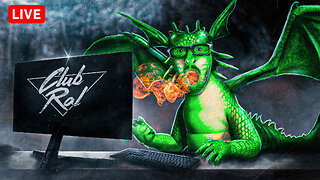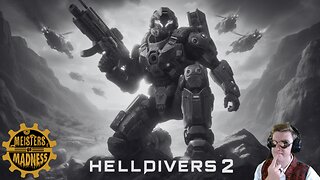Premium Only Content

Pull- Ups Training
A pull-up is an upper-body strength exercise. The pull-up is a closed-chain movement where the body is suspended by the hands and pulls up. As this happens, the elbows flex and the shoulders adduct and extend to bring the elbows to the torso.
The term chin-up, traditionally referring to a pull-up with the chin brought over the top of a bar, was used in the 1980s to refer to a pronated, or overhand, grip, with a supinated, or underhand, grip being called a "reverse-grip" chin-up.
In later decades, this usage has inverted, with some using "chin-up" to refer to a pull-up done with a supinated hand position, while "pull-up" refers specifically to the exercise done with a pronated hand position.
Pull-ups use many different muscles of the upper body, including the latissimus dorsi and the biceps brachii.
Terminology
In past decades, the term pull-up also referred to open-chain pulling exercises done with a barbell.[8] These exercises are now more popularly known as the bent-over row (in the 1950s)[8] and upright row (in the 1970s).
Some have associated a "pull-up" with utilizing an overhand (pronated; palms facing away) grip. This includes by the Boy Scouts of America,Guinness World Records "makes a difference between" pull-ups and chin-ups according to grip. Organizations such as the United States Marine Corps however, see pull-ups including both the overhand and underhand grips.
Variations of pull-ups, beyond being named for their grip, can also be named based on how high the body rises, by naming it after the body part that either comes into contact with or passes over the top of the bar. A "chest-up" or "sternum-up" for example, indicates that the chest or sternum meets the bar, requiring extra scapular adduction and depression.
As a physical test
Pull-ups are a common way to measure the upper body strength of the "pulling muscles". They are used by the United States Marine Corps as a part of the Physical Fitness Test, although marines may also choose to substitute push-ups.
Pull-ups were also used as part of military test in Singapore, where the IPPT for National-Service men is used. It is also used in the NAPFA test for male students above the age of 14. It was then removed in 2014 with the announcement of a new IPPT format.
Grips:
Pull-ups can be done with a supinated, neutral, or pronated grip (often called "chin-ups", "hammer grip pull-ups", and "pull-ups", respectively). Grips may match each other or be different (mixed grip). Grips may also rotate throughout the movement, such as by doing them on rings, rotating handles (false grip) or pull up handles. The range of motion used by trainers can vary. The fullest possible range is with straight arms overhead (elbow directly above shoulder), to pulling when the arms are at the sides (elbow directly below shoulder). People sometimes only train portions, such as avoiding locking out the arms at the bottom, or stopping when the head/chin/neck touch the bar. Positions within the range are also trained isometrically, as in flexed-arm and straight-arm hangs for time.
The width of the grip may also differ. When grabbing and holding the bar during the pull-up, the hands can be apart at shoulder-width, or wider, or narrower enough to touch each other. This may make the pull-up more difficult and may limit the range of motion compared to the shoulder-width grip.
Muscles used
Extension, adduction, and transverse abduction of the shoulder
Latissimus dorsi
Deltoid (posterior)
Pectoralis major
Teres major
Teres minor
Infraspinatus
Triceps brachii (long head)
Coracobrachialis
Adduction and inferior rotation of the scapula
Trapezius (lower and middle fibers)
Levator scapulae
Rhomboids
Pectoralis minor
Flexion of the elbow
Biceps brachii
Brachialis
Brachioradialis
Isometric flexion of the fingers
Flexor digitorum profundus
Flexor digitorum superficialis
Flexor pollicis longus
Flexor pollicis brevis
Flexor digiti minimi brevis
Isometric anti-extension and anti-rotation of the spine
Rectus abdominis
Internal oblique
External oblique
Safety
Organizations such as the American Council on Exercise give advice such as "care should be taken not to unduly put stress on your shoulder during this exercise".
Elbow pain due to tendonitis, bursitis, and ulnar nerve entrapment can occur as a result of excessive pull ups and improper technique.
-
 4:09:32
4:09:32
EricJohnPizzaArtist
6 days agoAwesome Sauce PIZZA ART LIVE Ep. #59: Are You Ready for some FOOTBALL with GameOn!
40.7K7 -
 1:21:43
1:21:43
Jake Shields' Fight Back Podcast
17 hours agoJake Shields and Paul Miller!
73.7K131 -
 1:20:41
1:20:41
TRAGIKxGHOST
8 hours agoTrying to get SCARED tonight! | Are You SCARED!? | Screams Beyond Midnight | Grab a Snack
27K5 -
 5:21:24
5:21:24
StuffCentral
10 hours agoI'm baaack (no you can't play with me.. unless you a healer)
26.9K6 -
 2:25:11
2:25:11
TheSaltyCracker
11 hours agoTrump Is Not Dead ReEEeStream 8-31-25
106K163 -
 3:09:16
3:09:16
THOUGHTCAST With Jeff D.
9 hours ago $5.99 earnedLabor Day Weekend FORTNITE With THOUGHTCAST Jeff & the squad
28K4 -
 3:44:05
3:44:05
Rallied
12 hours ago $7.01 earnedSolo Challenges All Day
51.2K2 -
 9:02:14
9:02:14
iCheapshot
12 hours ago $0.55 earnedCall of Duty: Black Ops Campaign
15.1K1 -
 4:39:16
4:39:16
Meisters of Madness
13 hours agoMadness in a Pod
12.8K1 -
 1:25:44
1:25:44
HELMETFIRE
10 hours ago🟢GAMING WITH FIRE EP9🟢
11.6K